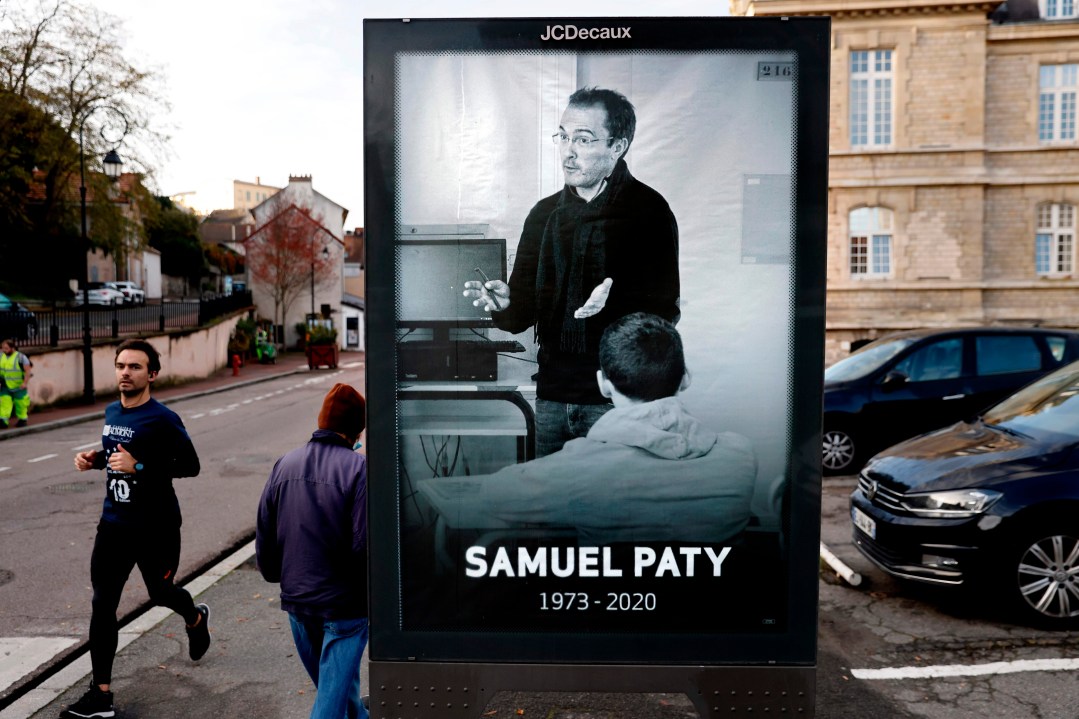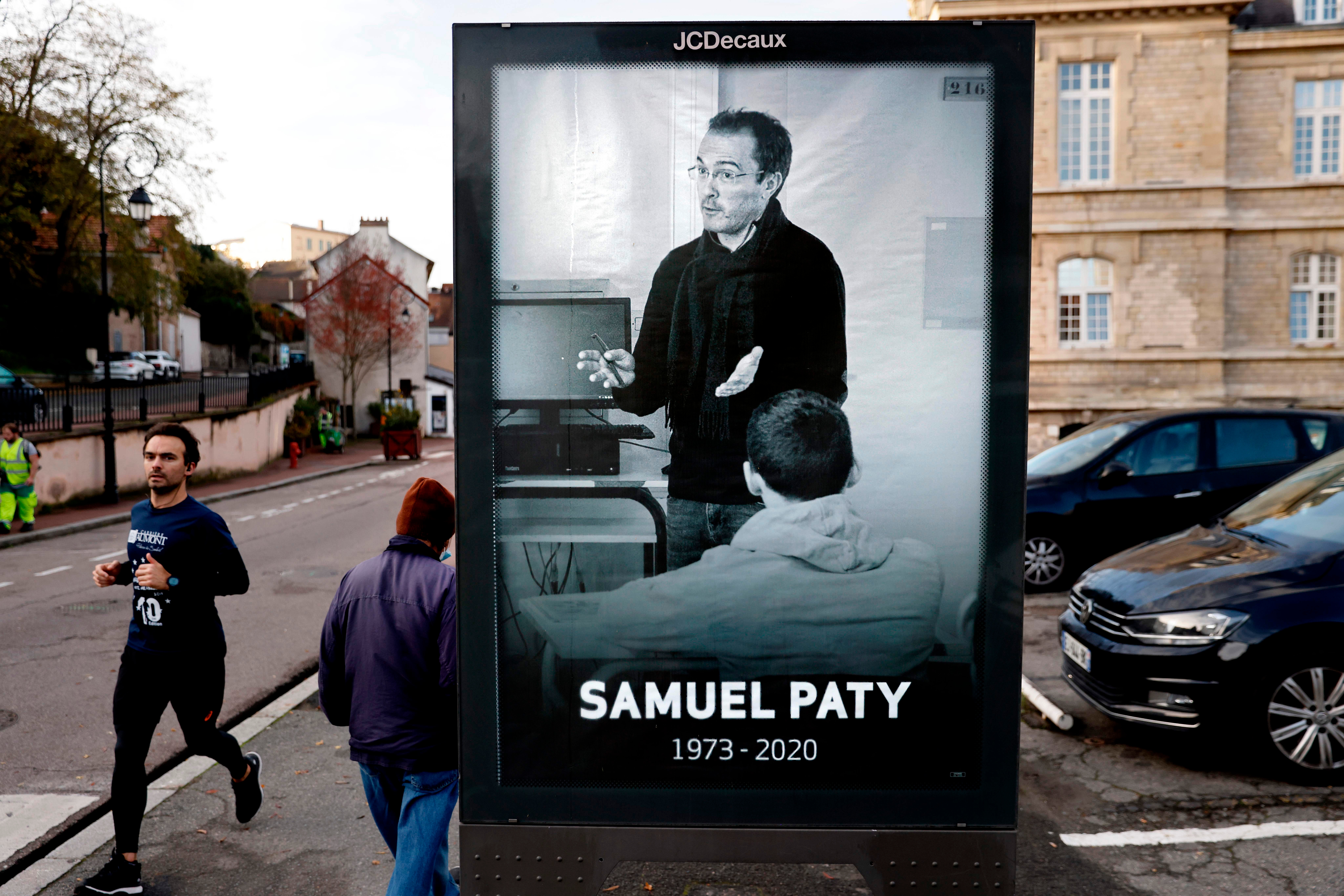Two years ago on Sunday Samuel Paty was brutally murdered by an 18-year-old outside his school in a Parisian suburb. The teacher’s crime was to have shown an image of the prophet Mohammed during a class discussion on the freedom of expression.
Paty’s killer was a Chechen, and it’s noteworthy that the two other major Islamist terror attacks in France in recent years – the murder of three worshippers in a Nice church and the killing of a policewoman in Rambouillet – were also the work of foreign-born terrorists.
Homegrown Islamic terrorists are now a rarity in France. They were responsible for most of the horrific attacks that traumatised the Republic between 2012 and 2016, although these were organised by either al-Qaeda or Isis; in other words by men who had little understanding of France.
In the immediate aftermath of the coordinated attack on Paris in November 2015, which left 130 dead, Isis released a statement exhorting French Muslims ‘to fight the infidel wherever you find him…What are you waiting for?’
But several Muslims were among those killed in Paris. Of the 86 people run down by a truck in Nice in 2016, ‘more than a third’ were Muslims.
The classroom is becoming a battleground between the laïcité (secularism) of the French Republic and the ultra-conservatism of the Islamists
All Isis did with their murderous attacks was to anger and alienate France’s six million Muslims, including many extremists who despaired at a strategy they knew would set back their cause by years.
Several of these extremists were interviewed by the French writer Hugo Micheron for a book that was published in 2020 entitled The French Jihad. At the time they were in prison, serving time for having fought in Syria or Iraq. One interviewee, Youssef, told Micheron that the people responsible for the massacre in Paris in November 2015 were ‘idiots’, particularly the terrorist cell that targeted the Stade de France because many in the crowd were Muslims.
Another inmate, Khaled, told Micheron that the civil war envisaged by Isis would be ‘pure madness’ because the Islamists would be crushed immediately. An extremist called Maurad agreed that France is too strong to be taken by brute force, and anyway, why would the Islamists want to do that? ‘I always say to people: is it better to take France intact or destroyed? You want your houses bombed like the Syrians? That leads to nothing. France is a beautiful country, let’s take it intact.’
The extremist leaders are confident France can be conquered by the long-term strategy of soft power, of using schools, sports clubs and prison to – in the words of the extremists – ‘re-Islamise’ young French Muslims. Demographics are also on their side with the Muslim population forecast to more than double to 13.2 million by 2050.
It is natural therefore that the extremists are waging their fiercest ideological war in schools where the classroom is becoming a battleground between the laïcité (secularism) of the French Republic and the ultra-conservatism of the Islamists.
Last month there were more than 300 instances of pupils challenging laïcité; more than half these cases involved children arriving at school wearing Islamic dress, but there were also pupils who refused to participate in lessons on religious grounds or challenged what was being taught for the same reason.
The sedition has continued this month but with a more sinister element. Samuel Paty’s name was evoked in threats made to two schools, one of which warned a Jewish teacher that he would suffer a similar fate to Paty. ‘Jews aren’t wanted in schools,’ ran the anonymous letter. ‘Stay in your synagogues.’
According to a cross-party parliamentary committee, the Prevention of Delinquency and Radicalisation, the extremists are increasingly using social media to proselytise. Teenagers are shown in videos how to dress in a way that is more Islamic than French, fashioning bandanas and other innocuous items into religious garments.
Pap Ndiaye, the Minister of Education, is aware of the ‘advice that certain ill-intentioned influencers can give to teenagers to circumvent the law’ but he vowed that ‘the Republic is stronger than TikTok’.
Some on the right, notably Éric Zemmour, accuse Ndiaye of being part of the problem. Appointed to the post by Emmanuel Macron in May, Ndiaye was a controversial choice, an academic specialising in Afro-American history described as a ‘quiet revolutionary’. In 2017 he accused France of ‘structural racism’. His name was jeered on Saturday in Paris at a rally organised by Zemmour in memory of Samuel Paty. The previous week in an op-ed for Le Figaro, Zemmour had accused Ndiaye of complicity in undermining the education system. ‘Wokeism joins Islamisation in destroying all that is left of the French in our state schools,’ he said, adding that progressive teaching ‘deprives our children of the intellectual means to develop their critical faculties in the face of the great indoctrination, whether it be anti-racist, feminist, ecological or LGBT’. In a television interview on Sunday, Ndiaye assured France that he will be unyielding in the fight against extremists who attempt to challenge laïcité.
Zemmour, and many of the people who attended his rally on Saturday, are baby boomers, more wedded to the principle of laïcité than millennials; according to a report published last year this younger generation of teachers are more sympathetic to the demands of Muslim pupils with 56 per cent of under-thirties declaring themselves in favour of the wearing of religious clothing in the classroom. Among teachers over the age of 50, the figure was 32 per cent.
This will further encourage the extremists, as will another poll published last year that found that 65 per cent of Muslim secondary school pupils place more emphasis on Islamic law than they do French law.
One of the extremists interviewed in prison by Micheron described himself as belonging to the ‘sacrificed generation’, those extremists whose combat was on the battlefield. Their children’s generation is waging their war in the classroom. ‘If I were you,’ he advised Micheron, ‘I would go and see what’s happening in schools.’








Comments